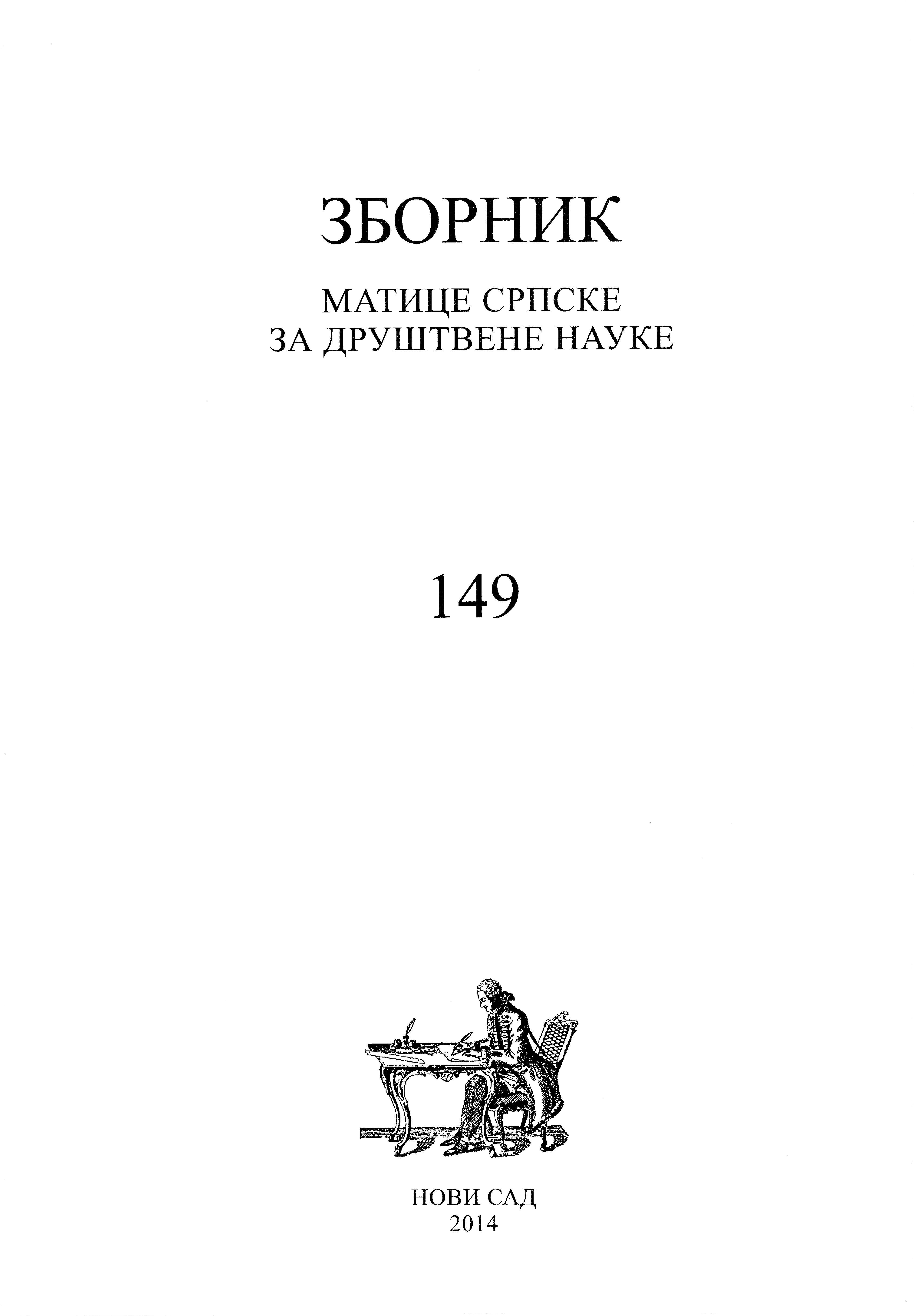Српска запажања мађарских културних достигнућа између два светска рата
Serbian Perception of Hungarian Cultural Achievements between Two World Wars
Author(s): Gojko MalovićSubject(s): Cultural history, Interwar Period (1920 - 1939), Inter-Ethnic Relations
Published by: Матица српска
Keywords: Hungarian culture; Hungary; Serbs; Yugoslavia; Hungarians; cultural works; Hungarian writers; Hungarian artistic works; Hungarian minority in Yugoslavia
Summary/Abstract: Because of the conflict between the Hungarians and the Serbs in the World War I, several years after its end Serbian public did not put much effort into perceiving and forming impressions of Hungarian cultural achievements. Nonetheless, Yugoslav state institutions, primarily the Ministry of Education (also in charge of cultural affairs), paid close attention to developments in the domain of Hungarian cultural achievements.Serbian public gradually became more interested in Hungarian cultural achievements and contents. It was informed about Hungarian cultural achievements largely through articles in Hungarian newspapers and magazines, above all those specialized in cultural and artistic contents in Hungary, particularly in Budapest, covering the events in the following fields: literature, theater, music and singing, visual arts, film, and radio shows. The Yugoslav (Serbian) press also published articles on Hungarian cultural contents.Many recorded notes, findings, impressions and opinions – predominantly positive ones – of leading Serbian intellectuals, primarily writers, were preserved, which may be viewed as paradigmatic Serbian interpretations of many segments of Hungarian cultural and artistic events between the two world wars.There were many initiatives by Hungarian cultural figures, as well as by leading Serbian intellectuals, for a closer and more direct contact with Hungarian cultural achievements through visits and presentations of cultural contents by prominent Hungarian writers, actors and theater troupes, singers and choirs, visual artists and other Hungarian cultural and artistic groups in Serbian towns, foremost in Vojvodina, a significant number of which were carried out.Many Serbs became directly acquainted with Hungarian cultural contents and accomplishments between the two world wars by visiting numerous cultural events in Hungary, primarily in Budapest.
Journal: Зборник Матице српске за друштвене науке
- Issue Year: 2014
- Issue No: 149
- Page Range: 875-900
- Page Count: 26
- Language: Serbian

